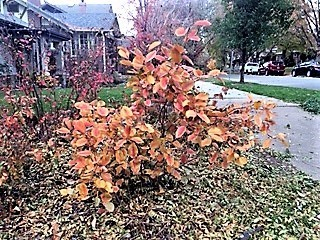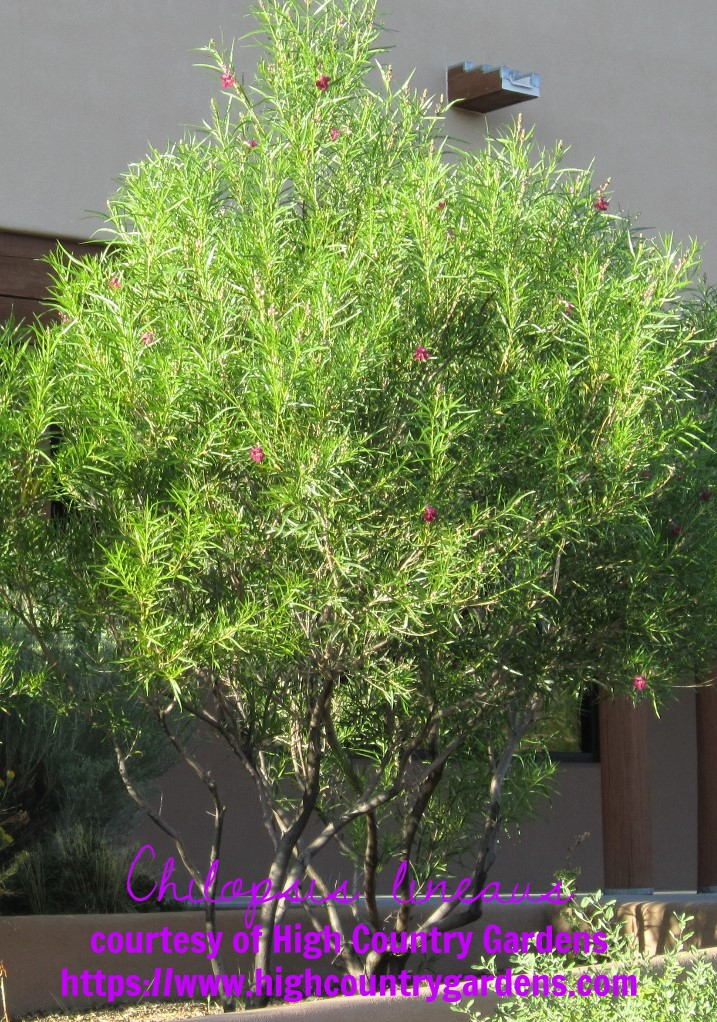By Deborah Lebow Aal
Climate change is having an affect on the plants that thrive in Colorado. And everywhere. This is disconcerting, to say the least, as we have been concentrating on incorporating native plants into Colorado’s Front Range landscapes. What do we know about what the effects will be? We do know that urban areas are warming faster than non-urban areas. We know that deforestation is likely having a huge effect. We know that we are losing trees because of fire, insects, drought and deforestation, much of that due to climate change. We know that trees store more carbon than grasslands. We know lots of things, but what do we know about what will happen to native plants?
Scientific reports seem to indicate that climate change is leaving native plants “behind.” A big takeaway from research being done in California is that plant and animal species are on the move at different rates. Overall, one in eight native California plant species shifted their range significantly in a century, with temperatures rising nearly 2 Degrees F. * And, they report that plants and birds are not moving together in sync. That does not sound like good news…We may be on our way to ecological communities breaking down. Audubon released its birds and climate report, and found that of the 588 North American bird species studied, more than half are likely to be in trouble (climate.audubon.org).
So what are we, as gardeners, to do? We are in a bit of a bind, in that there is not much we can control but, according to Audubon, what we can do is create a bird-friendly yard. Healthy birds will be better equipped to face the challenges of a warming world. What does that mean, a bird-friendly yard? It means, among other things, natives plants, native plants, native plants. Some of my favorite plants benefitting birds the most on the Front Range are Chokecherry (Prunus virginiana), Gambel oak (Quercus gambelii), and Serviceberry (Amelanchier alnifolia).

A Front Yard Capture by Deborah Lebrow, October 2018

I also think, and this might be blasphemy in the scientific community, that we should start adopting some of the native plants from just south of us, to keep up with the timing of migrating birds. I have not seen any scientific studies to support this. It just seems logical, doesn’t it? One of my favorite natives from just south of the Front Range is the Desert Willow, Chilopsis lineaus, native to the high deserts of the Southwest. Desert Willow is a gorgeous small tree, or large bush, with pink flowers all through the summer. It is technically not a willow, but a member of the Catalpa family. In its native habitat, it supports a huge number of caterpillar and moth species. I have heard it described as “the cornerstone of a whole web of life.” It can survive drought, is quite heat tolerant – in fact mine looked wonderful during the worst of the 2018 summer dry spell – and it can tolerate cold down to -10 degrees. And, therein lies the problem. We can get colder than that on the Front Range. And we do not know what climate change** will do to our coldest temperatures.

So, my two desert willows are in protected areas, one on a patio that gets hot enough to wilt everything else (including prickly pear!) in the summer, but is protected from the worst of our cold spells. The other is close to a fence that I’m hoping will protect it. Marcia Tatroe*** wrote an article for the Denver Post in 2013 on how to help Desert Willows adapt to a Colorado climate. She wrote that she had killed her fair share of them, and finally opted for a white variant given to her, which she planted in a highly protected microclimate in her yard. I’ll check in with Marcia to see if it’s still alive (so far no response), but I have to say the pink flowers that look very orchid-like, all summer long are worth the “trouble.”
Having a bird-friendly yard also means not using pesticides, leaving dead wood standing, having water for birds, and converting lawns to more productive native plants. That sounds like a broken record. I think Wild Ones’ articles have mentioned these things almost every month. Here’s a tiny tidbit for you if you are still resisting reducing your lawn size:
“On average, mowing your lawn for one hour produces as much pollution as driving 650 miles. Moreover, we now burn 800 million gallons of gas each year in our dirty little lawnmower engines, to keep our lawns at bay.” From Bringing Nature Home by Douglas W. Tallamy (page 136).
So, we will all have to be observing what climate chaos will be doing to our natives and what we can do to preserve old favorites or welcome new. Maybe the next article on this topic will have advice from you, readers, on what is going on in your yard or more tips on what we can do with the coming changes. And, as always, let me know what I missed, here. I am no expert on climate chaos.
* Much to everyone’s chagrin, invasive plant species are adapting faster to new conditions and are moving to higher altitudes faster than natives.
** My friends in the climate field don’t like the terms climate change or global warming. They use “climate chaos” to describe what is happening. In fact, that’s what I will use from now on.
*** Marcia Tatroe is a writer, lecturer, and fearsome gardener in the Denver area. She wrote the wonderful book Cutting Edge Gardening in the Intermountain West in 2007.
